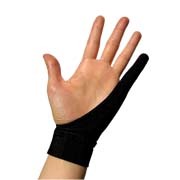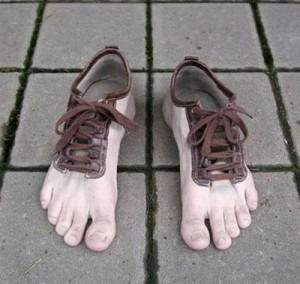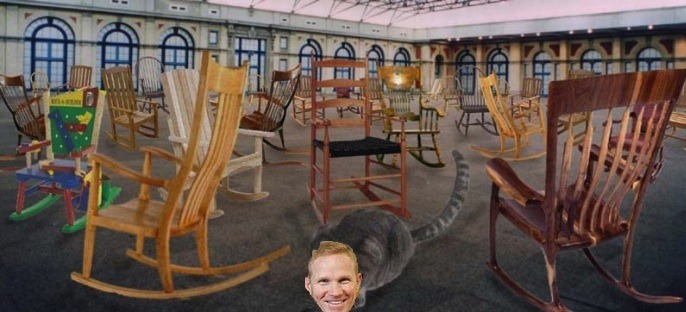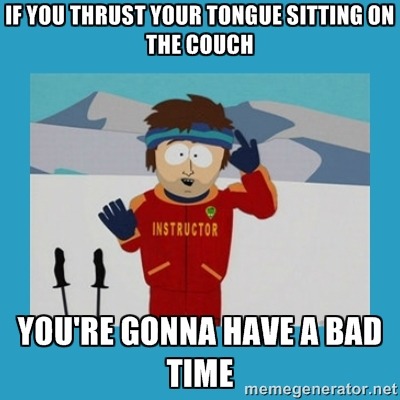A Quick Trip Home
I made my first trip back to my roots since moving out west to watch Mike Cantrell’s version of one of my favorite courses: Impingement and Instability.

Yes, if you are wondering, my family does hate me for not being able to visit them.
Mike absolutely killed all of the various topics we covered, and his ability to coach some of the advanced PRI activities is second to none. I had a blast learning from him.
I won’t go over all the nitty gritty like I did here, but here were some of my favorite concepts that we covered.
Learn on.
The I&I Conundrum
Impingement occurs due to the human system’s conflicting demands.
We face a battle between instability and stability. Flexion allows for movement variability, which is desirable in the human system. Variable movement reduces threat perception.
However, system flexion leads to increased instability and the risk of falling forward. To combat this risk, impingement may occur by compensatory extension. Extension begets joint and system stability, yet system variability is minimized. Increased stability is desirable when under threat, but not for long term.
The “goal” then, would be to build control within flexed instability so the system can stay variable; to remain upright without extension. As Charlie Weingroff would say, we want “control within the presence of change.” That is alternating and reciprocal movement.

That doesn’t mean you have to do silly little PRI exercises for the rest of your life. PRI activities are simply neuromuscular training tools that help differentiate left vs. right to create system variability. Graded motor imagery’s laterality training does the same thing, albeit at the most rudimentary level. PRI is a progression from that.
Once we develop triplanar awareness, all we need to do to maintain system variability is continually reinforce variable position throughout the day.
Reference is the Key
The way we can remain upright without impinging into extension is to develop interoceptive and exteroceptive awareness of stability points in system flexion. More specifically, stability points created in left stance.
The name of the game is reference centers, which keep a flexed system upright in the environment. These centers allow one to engage the opposition muscles necessary to achieve left stance. In neutrality, reference centers give us control in the presence of change.
If we lose a frame of reference in flexion, then we lose stability. If we lose stability, we extend to become stable. If we extend to become stable, we impinge to create reference.

I&I mentions six official reference centers that send us into the RAIC/LBC pattern. However, there a several different ways we can create a reference. I’ll list the sweet 6 as well as a few others that were mentioned:
- Right medial longitudinal arch when in left AF IR – Gives us right glute max
- Left posterior (center) calcaneal tuberosity – Gives us left IC adductor
- Left Ischial tuberosity – gives us left hamstring
- Left anterior acetabular femoral capsule/right posterior hip – Gives us left stance
- Left IO/TA/left posterior ribcage – gives us exhalation and a ZOA
- Right lateral posterior upper ribs and right scapular when in left AF IR – gives us inhalation within a state of flexion.
- Right lateral knee – Gives us right glute max
- Tongue on the roof us the mouth – Pressurizes maxillary arch (aka mouth diaphragm) and relaxes neck musculature.
- Left molars – Equivalent of left calcaneus.
- Right pisiform – Your hand’s calcaneus. Feel this in the closed chain to get a right serratus.
- Left index finger – to create an arch in the left hand; allows for grasping objects.
Compensatory Strategies
If one cannot find these references, one will right lateralize. The left AIC/right BC pattern is the norm. We are biased to be right dominant, and it is a way for us to maintain some semblance of stability.
There are several ways that individuals attempt to compensate for this bias. Some do nothing, some develop the capacity to alternate and reciprocate, some become left handed, some increase extensor tone to PEC levels.

In most cases, becoming alternating and reciprocal is desirable.
I Finally Figured Out the Foot a Little Better
The foot was somewhat of an enigma for me, even after taking I&I previously. Here is the lowdown.

In the LAIC/RBC pattern, the right foot is in a more supinatory position with calcaneal inversion; the left foot is pronated with an everted calcaneus.
These foot positions can create hallux limitus in both big toes for different reasons. The right big toe can be limited via active insufficiency if the first ray plantarflexes to touch the ground. This position would be a “deficit” equivalent to a decreased left straight leg raise secondary to an anteriorly rotated innominate. This compensation would also create a larger gap between toes 1 and 2 via abductor hallucis.
The left big toe is limited by passive insufficiency secondary to a pronated foot. The first ray is dorsiflexed because the foot is pressed into the ground.
Restoring big toe mobility must therefore follow a different progression than simply mobilizing great toe extension. The first line of business is to stabilize the calcaneus. If the calcaneus is moving all over the place and cannot adequately contact the ground, stability has to occur somewhere. Oftentimes this will occur at the mid to forefoot, promoting the aforementioned foot position.
We can create calcaneal stability via gastrocnemius inhibition to allow the heel to touch the ground:
[Side note: That squat was barefoot without my gelb splint or glasses. You have no idea how monumental that is for me.]
If your heels cannot touch the ground, you will never access frontal plane. If someone keeps losing hip extension or adduction in standing, think gastroc inhibition.
Then, we can create stability with good shoewear. Look for a stable heel counter as my Dad demonstrates below:
A stable calcaneus is needed because hindfoot position controls what occurs at the forefoot. The subtalar joint unlocks the forefoot during eversion and locks it during inversion. Foot intrinsic strength becomes meaningless if you can’t control frontal plane calcaneus movement.
Take that into account if you are a barefoot advocate. I’m totally cool with the idea of barefoot training IF you can stabilize your calcaneus and are not driven further into extension with your shoes off.

Once we have a stable calcaneus, addressing first ray position becomes critical. Oftentimes the first ray is good once you have the calcaneus, but if not we may need to build up the arch in the shoe or throw in some classic manual therapy to alter position.
Foot position can be extrapolated by testing hip abduction and adduction movement. If there is limited abduction, chances are an individual is overpronating. If the adduction drop is positive even after gastroc inhibition, there is likely a supination restriction.
If you perform the above steps and there are still big toe extension limitations, then big toe-oriented manual therapy sounds like a wise choice.
Some Neat TMCC Side Discussion
You ever wonder why people stick out their tongue when performing a challenging activity?

It has to do with tongue thrusting. One thrusts the tongue forward to create OA and neurological extension. This maneuver would help increase extensor tone, leading to improved force production.
It’s probably not a good idea to do that all the time.
Many individuals with a narrow palette, and thus a narrow airway, require palatal expansion. We want the maxillary arch to look like a U more so than an A.
When we look at how to expand the palette, there are several different devices that can be used; ranging from most aggressive to least aggressive:
- Rapid Palatal Expander (RPE): this is where you turn the key to expand the palette. = Bulldozer knocking down a tree.
- Herbst appliance = car chained to a tree.
- Alternative lightwire Functional Splint (ALF): Spreads the palette 2mm to reduce muscle tone. = A person holding a tree.
- Tongue on the roof of a mouth = Dog peeing on a tree.
Hip Impingement Help
Walking should allow for desirable acetabulum on femur (AF) and femur on acetabulum (FA) movement in three planes.
AF adduction ought to occur from foot strike to midstance, and AF abduction from midstance to terminal swing. The hip also progresses from external rotation to internal rotation up to midstance, then back to external rotation until terminal swing.
If these joint positions cannot be achieved secondary to the pattern, nociception from the hip joint can be produced by impingement regardless of closed or open kinetic chain activity.
There are three common types of impingement seen in the clinic, and PRI has implemented strategies to reduce the chance of these occurring.
Anterosuperior acetabular femoral impingement (ASAF)
- Usually occurs on the left when attempting to shift into AF IR.
- Demonstrates need for anterior glute med, so bias FA IR before shifting into AF IR.
Anteromedial femoral acetabular impingement (AMFA)
- Usually occurs on the right when attempting to IR the femur or with posterior translation of the humeral head in flexion.
- Reflects need of a right glute max.
Laterosuperior femoral acetabular impingement (LSFA)
- Usually occurs on the right side when attempting to abduct. Described as a pinch below the iliac crest.
- Needs to be able to abduct in left AF IR position.
That’s It
There were so many other topics that were discussed here, but I wanted to provide some more in-depth discussion with some of my favorite topics covered. Get to a PRI course as soon as you can, as they continue to be the best in the biz.

Cantrellisms
- “Madder than a wet hen.”
- “You’ll learn one language in school and you’ll learn how to get patients better here.”
- “What good does it do to strengthen a rotator cuff on a scapula that is not home?”
- “If they can’t dance you’re going to have a hard time working with them.”
- “A wink is as good as a nod to a blind mule.”
- “Walking is a compensatory strategy.”
- “Slicker than the center seed of a cucumber.”
- “There’s no such thing as a left handed protocol.”
- “Slicker than a peeled onion.”
- “She’s grinning like a butcher’s dog.”
- “Get a zone and 75% of patients get better.”
- “Neuro always trumps orthopedic.”
- “Everyone who wears flip flops is doing toe raises.”
- “We should be smelling fried glute in a few minutes.”
- “The spirometer doesn’t lie.”
- “Screwed up as a soup sandwhich.”
- “Slicker than a firehouse pole.”
- “Only way you can get a reset is with a pause.”
- “Why strengthen a rotator cuff on a skateboard?”
- “If you just listen to country, you’re going to lateralize to the right.”
- “I got no wrinkle in my britches and I’m fixin’ to shift.”
- “Crooked as a goat path.”
- “Hotter than a $2 pistol.”
- “I don’t need to be at home depot all the time. Let’s do this.”
- “Sweeter than sour with honey.”
- “Nervous as a long tail cat in a room full of rocking chairs.”
- “PTs write prescriptions to inhibit.”
- “Quiet as a church mouse.”
- “Once the toilet is flushed everything is gone.”
- “Naw hell.”
- “Well don’t just do something, sit there.”
- “Did you see that? I just metabolized.”
- “Hawkins-Kennedy? Neers? I don’t know what that is.”



[…] think my blog has officially become a feeder to zaccupples.com. Check out his write up of his recent course attendance, Impingement and […]
[…] you’ve applied both systemic and manual inputs to no avail, there is another strategy we ought to more frequently […]
[…] for constantly changing posture, as we must adjust to an ever-changing environment. The hands and feet in particular also play a huge role in how we interact with our […]
[…] movement was looked at, and edumacation happened. At this point, after a little explain pain and kinetic chain discussion, these women were […]